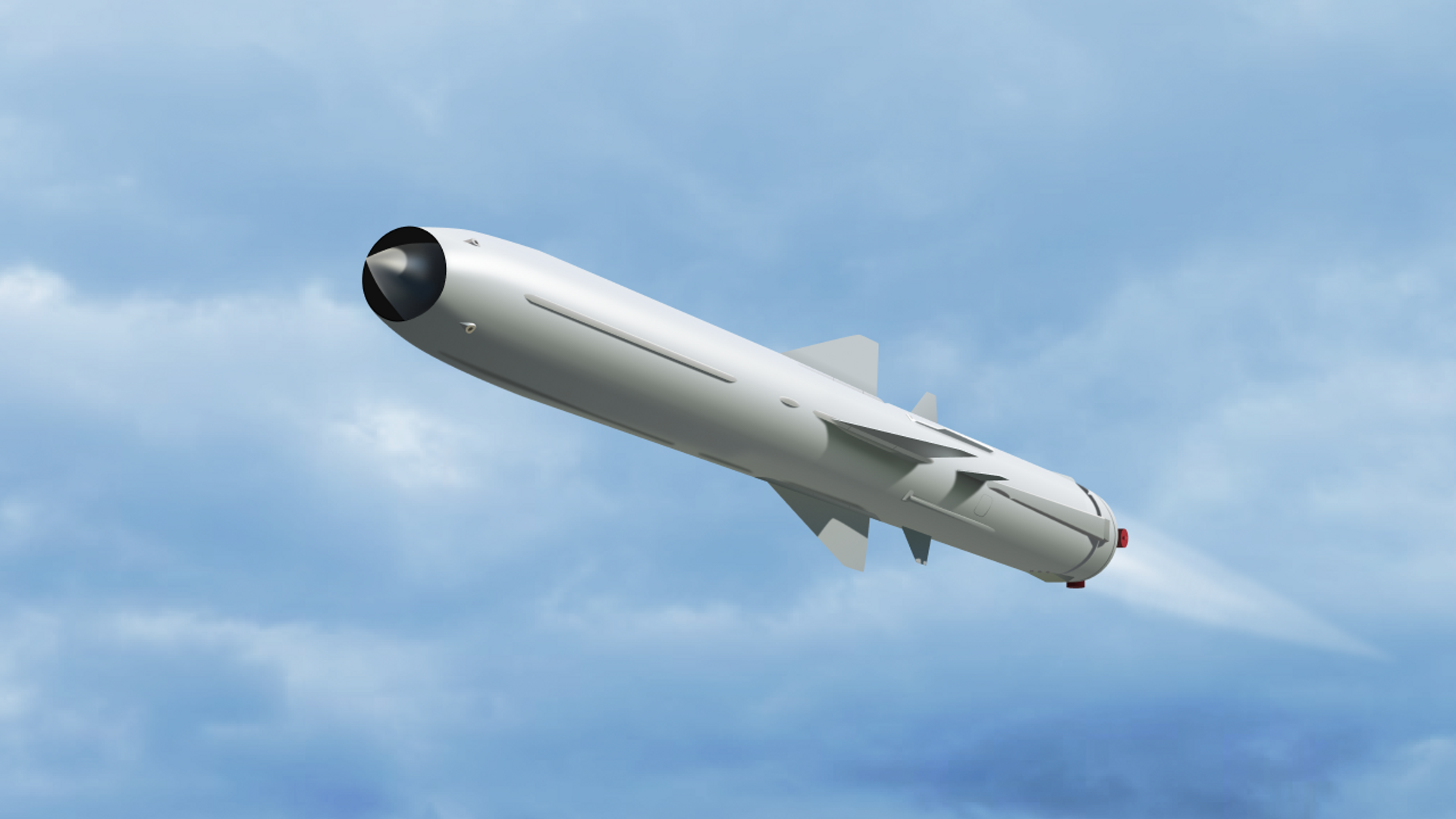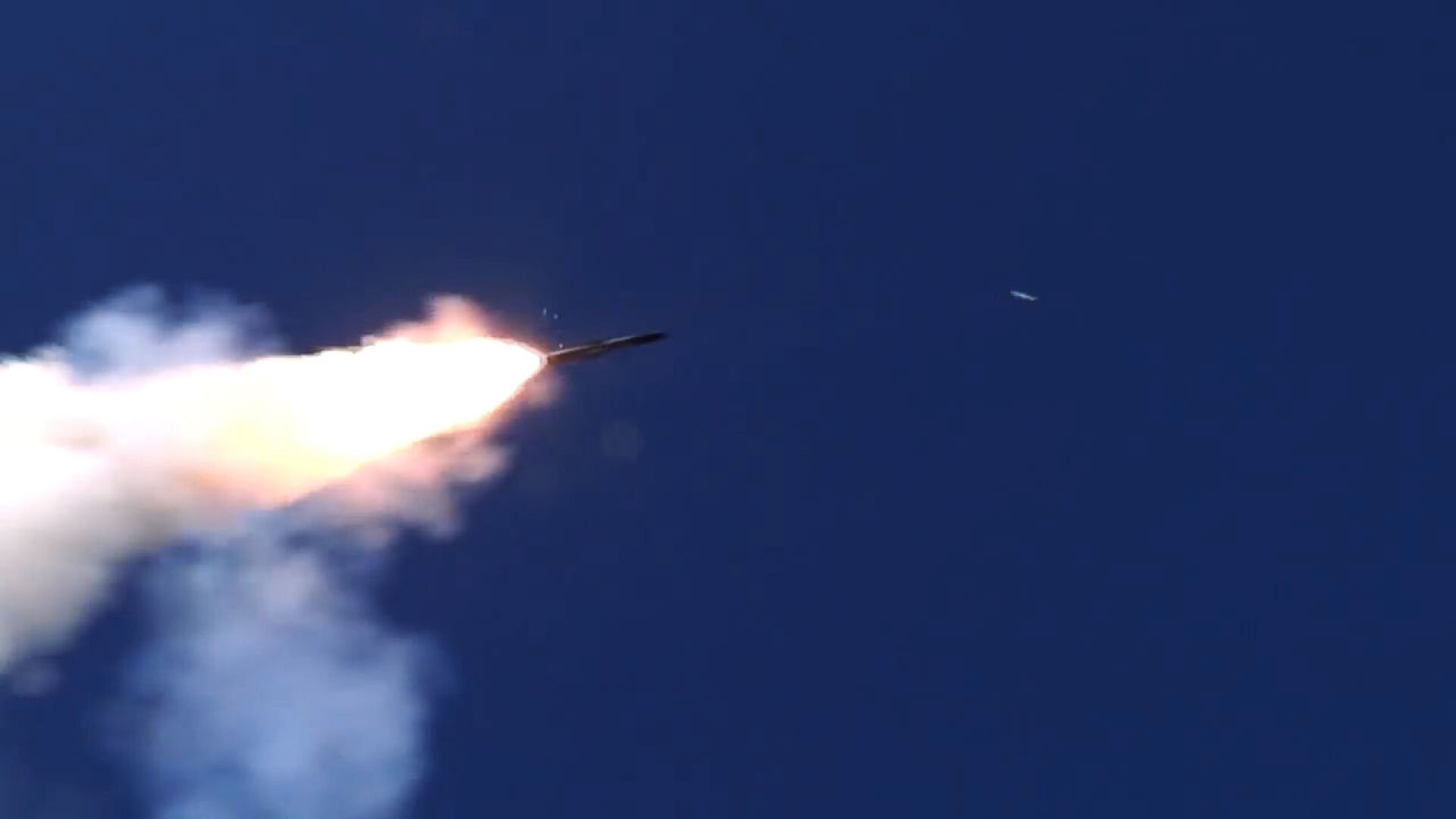https://sputniknews.in/20230725/this-100-on-target-russian-brahmos-sends-chills-up-ukraines-spine-3167011.html
This 100% On-Target Russian Brahmos Sends Chills Up Ukraine's Spine
This 100% On-Target Russian Brahmos Sends Chills Up Ukraine's Spine
Sputnik India
The P-800 Onik missiles, also known as Russian Brahmos, are practically invulnerable to interception from the air defense systems deployed by Ukraine at present, a Moscow-based defense expert has said.
2023-07-25T16:16+0530
2023-07-25T16:16+0530
2023-07-25T18:20+0530
ukraine conflict
russia
ukraine
ukraine armed forces
moscow
kremlin
special military operation
black sea initiative (grain deal)
black sea
missile strike
https://cdn1.img.sputniknews.in/img/07e7/07/19/3172081_0:0:1280:720_1920x0_80_0_0_9d08491312d9438ec00ae933614873ab.png
The P-800 Oniks missiles, also known as the Russian Brahmos, are practically invulnerable to interception from Ukraine's air defense systems at present, a Moscow-based defence expert has revealed.The following comments by Yuri Knutov, a military historian and director of the Museum of the Air Defence Forces (ADF), come at a time when Moscow has extensively used these missiles to target the port city of Odessa using its Bastion coastal missile system located in Crimea.Ukraine Stockpiled Arms & Ammo in Black Sea PortFollowing the termination of the Black Sea Grain Initiative (also known as the grain deal) on July 18, Russia launched missile strikes on Odessa, where the Kiev regime had been stashing stockpiles of arms and ammunition.It's worth noting that the Russian military started conducting strikes against Ukraine's infrastructure on 10 October 2022 in retaliation for the terror attack on the Crimean Bridge carried out by the Kiev regime's intelligence agencies. According to Russia's Defence Ministry, the strikes hit energy, defence sector, military command and communications facilities throughout the country.Kiev Admits It Can't Shoot Down These Top-Notch MissilesYury Ignat, spokesman for the Kiev regime's air force, later confirmed,Given this fact, Knutov provided an explanation clarifying the difficulties faced by the Ukrainian and Western air defence systems in detecting P-800 Oniks.He mentioned that this missile is universal, meaning it can be used both as a ship-based version and as an airborne version, and can function both against sea-surface and ground targets.For the first time, the P-800 Oniks were deployed to carry out raids on real ground targets in Syria, where it achieved tremendous success.What Makes P-800 Oniks So Hard to Intercept?In addition, the Oniks missile has great manoeuvrability since there are special gas-dynamic rudders that allow this rocket to have a certain degree of super-manoeuvrability.Knutov added that the missile's speed capabilities were sky-high, reaching Mach 3, thereby, making it practically invulnerable to any means of interception by the Kiev regime's air defences.After this, the missile guidance station automatically aims at the target according to the radar data and, accordingly, captures this target for automatic tracking.Thereafter, the moment of the missile launch is determined to identify the meeting point of the missile with the target in time, and the missile flies to this point.What's the Difference Between P-800 Oniks and BrahMos?The military historian was also asked about the similarities between the Brahmos missiles and the P-800 Oniks. Knutov replied that like the P-800 Oniks, the Brahmos was a lethal weapon to have in one's arsenal, as it was equally hard to shoot it down.Knutov argued that as for the P-800 Oniks, Russia began using them to destroy ground targets. But it couldn't deploy them in large numbers because under the guise of a grain deal, Ukraine gathered warehouses of ammunition and equipment in Odessa, and training of personnel was being carried out there.
https://sputniknews.in/20230531/as-uk-made-storm-shadow-flunks-in-ukraine-india-sees-scalp-missiles-as-modifiable-2256115.html
russia
ukraine
moscow
black sea
Sputnik India
feedback.hindi@sputniknews.com
+74956456601
MIA „Rossiya Segodnya“
2023
Pawan Atri
https://cdn1.img.sputniknews.in/img/07e6/0c/13/139630_147:0:831:684_100x100_80_0_0_8fa2b25903e7787fe6a2698552c167df.png
Pawan Atri
https://cdn1.img.sputniknews.in/img/07e6/0c/13/139630_147:0:831:684_100x100_80_0_0_8fa2b25903e7787fe6a2698552c167df.png
News
en_IN
Sputnik India
feedback.hindi@sputniknews.com
+74956456601
MIA „Rossiya Segodnya“
Russia strikes ammunition depots near Odessa
Sputnik India
Russia strikes ammunition depots near Odessa
2023-07-25T16:16+0530
true
PT0M14S
Sputnik India
feedback.hindi@sputniknews.com
+74956456601
MIA „Rossiya Segodnya“
Pawan Atri
https://cdn1.img.sputniknews.in/img/07e6/0c/13/139630_147:0:831:684_100x100_80_0_0_8fa2b25903e7787fe6a2698552c167df.png
what is onyx missile, oniks, onyx, onyx missile, oniks missile, p-800 oniks missile cost, p-800 onyx missile launch, oniks missile launch, india onyx missile, oniks hypersonic missile, russia fires new supersonic p-800, p-800 onyx missile, p 800 onyx missile, p 800 oniks vs brahmos, onyx supersonic cruise missile, onyx missile maximum range, onyx cruise missile, onyx anti ship missile, india onyx missile, how fast is the oniks missile, what is the difference between brahmos and onyx?, what is the range of the onyx rocket?, what type of missile is the oniks?, what is the most powerful anti missile?, what is the most advanced anti missile system?, is brahmos russian?, what is brahmos called in russia?,is brahmos a russian missile?, indonesia oniks missile, p-800 oniks missile cost, p 800 oniks vs brahmos,
what is onyx missile, oniks, onyx, onyx missile, oniks missile, p-800 oniks missile cost, p-800 onyx missile launch, oniks missile launch, india onyx missile, oniks hypersonic missile, russia fires new supersonic p-800, p-800 onyx missile, p 800 onyx missile, p 800 oniks vs brahmos, onyx supersonic cruise missile, onyx missile maximum range, onyx cruise missile, onyx anti ship missile, india onyx missile, how fast is the oniks missile, what is the difference between brahmos and onyx?, what is the range of the onyx rocket?, what type of missile is the oniks?, what is the most powerful anti missile?, what is the most advanced anti missile system?, is brahmos russian?, what is brahmos called in russia?,is brahmos a russian missile?, indonesia oniks missile, p-800 oniks missile cost, p 800 oniks vs brahmos,
This 100% On-Target Russian Brahmos Sends Chills Up Ukraine's Spine
16:16 25.07.2023 (Updated: 18:20 25.07.2023) Flying low at just 10–15 metres above sea level, with a hypersonic speed of 3,000 km per hour, the P-800 Oniks missiles have virtually remained invisible for Ukraine's air defense systems.
The P-800 Oniks missiles, also known as the Russian Brahmos, are practically invulnerable to interception from Ukraine's air defense systems at present, a Moscow-based defence expert has revealed.
The following comments by Yuri Knutov, a military historian and director of the Museum of the Air Defence Forces (ADF), come at a time when Moscow has extensively used these missiles to target the port city of Odessa using its Bastion coastal missile system located in Crimea.
Ukraine Stockpiled Arms & Ammo in Black Sea Port
Following the termination of the
Black Sea Grain Initiative (also known as the grain deal) on July 18, Russia launched missile strikes on Odessa, where the Kiev regime had been stashing stockpiles of arms and ammunition.
It's worth noting that the Russian military started conducting strikes against Ukraine's infrastructure on 10 October 2022 in retaliation for the
terror attack on the Crimean Bridge carried out by the Kiev regime's intelligence agencies. According to Russia's Defence Ministry, the strikes hit energy, defence sector, military command and communications facilities throughout the country.
Remarkably, the Ukrainian Air Force acknowledged the lethality of the P-800 Oniks as it released a statement following the Russian attack on Odessa overnight between July 19 and 20, stating that it could not eliminate even one such missile fired on the town.
Kiev Admits It Can't Shoot Down These Top-Notch Missiles
Yury Ignat, spokesman for the Kiev regime's air force, later confirmed,
"Ukraine does not yet have the ability to shoot them down, since the missile flies at a speed of more than 3,000 km/h."
Given this fact, Knutov provided an explanation clarifying the difficulties faced by the Ukrainian and Western air defence systems in detecting P-800 Oniks.
He mentioned that this missile is universal, meaning it can be used both as a ship-based version and as an airborne version, and can function both against sea-surface and ground targets.
For the first time, the P-800 Oniks were deployed to carry out raids on
real ground targets in Syria, where it achieved tremendous success.
What Makes P-800 Oniks So Hard to Intercept?
In addition, the Oniks missile has great manoeuvrability since there are special gas-dynamic rudders that allow this rocket to have a certain degree of
super-manoeuvrability.
"At the initial stage, it can climb to a height of up to 14 km, if long range is needed. But later, it approaches the target directly at heights of 10-15 metres, which practically does not allow enemy radar stations and enemy missile guidance stations to observe this target against the backdrop of the ground and capture it, and even more so to fire at it," the Russian defence analyst noted.
Knutov added that the missile's speed capabilities were sky-high, reaching Mach 3, thereby, making it practically invulnerable to any means of interception by the Kiev regime's air defences.
He pointed out that modern air defence systems like NASAMS or Patriot on which Ukraine relies heavily use a "capture system" to transmit information to the missile guidance station.
After this, the missile guidance station automatically aims at the target according to the radar data and, accordingly, captures this target for automatic tracking.
Thereafter, the moment of the missile launch is determined to identify the meeting point of the missile with the target in time, and the missile flies to this point.
"But since the P-800 Oniks are equipped with electronic warfare systems and systems to override EW with their own jamming system, those stations that work on the rocket may lose the tracking rocket due to interference. Plus, those electronic warfare systems that Volodymyr Zelensky's forces have not able to impact the guidance system for these missiles," Knutov asserted.
What's the Difference Between P-800 Oniks and BrahMos?
The military historian was also asked about the similarities between the Brahmos missiles and the P-800 Oniks.
Knutov replied that like the P-800 Oniks, the Brahmos was a lethal weapon to have in one's arsenal, as it was equally hard to shoot it down.
"The New BrahMos actually accelerates to hypersonic speed, making it a very hard target to hit. And India even offered the supply of Brahmos to Russia. But Bramos is an anti-ship missile, while the entire Ukrainian fleet has been destroyed. Therefore, we don't need Brahmos in this case," he opined.
Knutov argued that as for the P-800 Oniks, Russia began using them to destroy ground targets. But it couldn't deploy them in large numbers because under the guise of a grain deal, Ukraine gathered warehouses of ammunition and equipment in Odessa, and training of personnel was being carried out there.
"Now that the deal has been halted, naturally, Kiev did not have time to take anything out of there or bring any air defence there, and we, of course, are working on all these military facilities as targets," he concluded.





